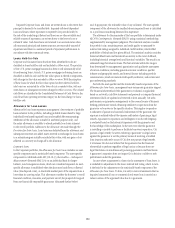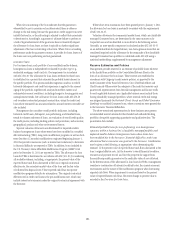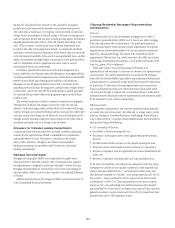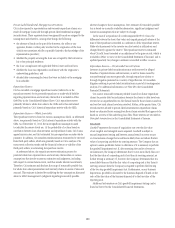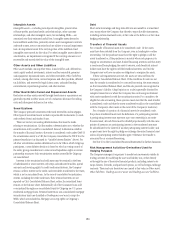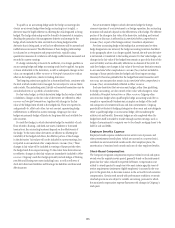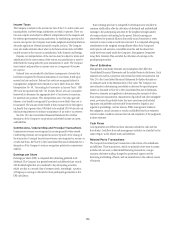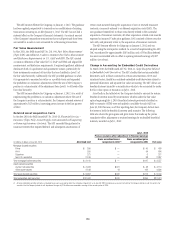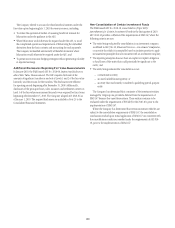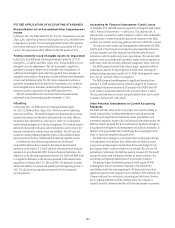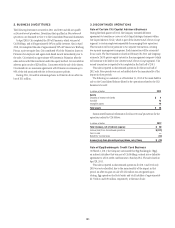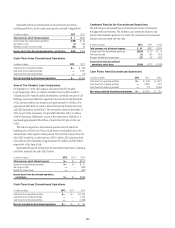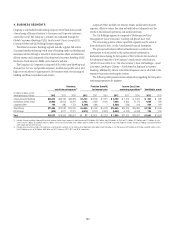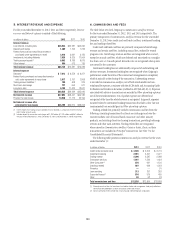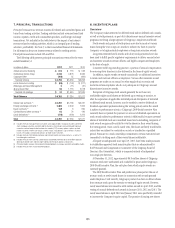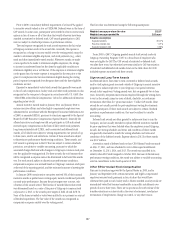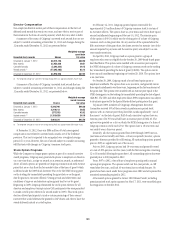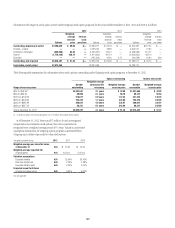Citibank 2012 Annual Report Download - page 182
Download and view the complete annual report
Please find page 182 of the 2012 Citibank annual report below. You can navigate through the pages in the report by either clicking on the pages listed below, or by using the keyword search tool below to find specific information within the annual report.160
FUTURE APPLICATION OF ACCOUNTING STANDARDS
Reclassification out of Accumulated Other Comprehensive
Income
In February 2013, the FASB issued ASU No. 2013-02, Comprehensive Income
(Topic 220): Reporting of Amounts Reclassified out of Accumulated Other
Comprehensive Income. The Accounting Standards Update (ASU) requires
new footnote disclosures of items reclassified from accumulated OCI to net
income. The requirements will be effective for the first quarter of 2013.
Testing Indefinite-Lived Intangible Assets for Impairment
In July 2012, the FASB issued Accounting Standards Update No. 2012-02,
Intangibles—Goodwill and Other (Topic 350): Testing Indefinite-Lived
Intangible Assets for Impairment. The ASU is intended to simplify the
guidance for testing the decline in the realizable value (impairment) of
indefinite-lived intangible assets other than goodwill. Some examples of
intangible assets subject to the guidance include indefinite-lived trademarks,
licenses and distribution rights. The ASU allows companies to perform a
qualitative assessment about the likelihood of impairment of an indefinite-
lived intangible asset to determine whether further impairment testing is
necessary, similar in approach to the goodwill impairment test.
The ASU became effective for annual and interim impairment tests
performed for fiscal years beginning after September 15, 2012.
Offsetting
In December 2011, the FASB issued Accounting Standards Update
No. 2011-11, Balance Sheet (Topic 210): Disclosures about Offsetting
Assets and Liabilities. The standard requires new disclosures about certain
financial instruments and derivative instruments that are either offset in
the balance sheet (presented on a net basis) or subject to an enforceable
master netting arrangement or similar arrangement. The standard requires
disclosures that provide both gross and net information in the notes to the
financial statements for relevant assets and liabilities. This ASU does not
change the existing offsetting eligibility criteria or the permitted balance
sheet presentation for those instruments that meet the eligibility criteria.
Citi believes the new disclosure requirements should enhance
comparability between those companies that prepare their financial
statements on the basis of U.S. GAAP and those that prepare their financial
statements in accordance with IFRS. For many financial institutions, the
differences in the offsetting requirements between U.S. GAAP and IFRS result
in a significant difference in the amounts presented in the balance sheets
prepared in accordance with U.S. GAAP and IFRS. The disclosure standard
will become effective for annual and quarterly periods beginning January 1,
2013. The disclosures are required retrospectively for all comparative
periods presented.
Accounting for Financial Instruments—Credit Losses
In December 2012, the FASB issued a proposed Accounting Standards Update
(ASU), Financial Instruments—Credit Losses. This proposed ASU, or
exposure draft, was issued for public comment in order to allow stakeholders
the opportunity to review the proposal and provide comments to the FASB,
and does not constitute accounting guidance until such a final ASU is issued.
The exposure draft contains accounting guidance developed by the FASB
with the goal of improving financial reporting about expected credit losses
on loans, securities and other financial assets held by banks, financial
institutions, and other public and private organizations. The exposure draft
proposes a new accounting model intended to require earlier recognition of
credit losses, while also providing additional transparency about credit risk.
The FASB’s proposed model would utilize a single “expected credit loss”
measurement objective for the recognition of credit losses, replacing the
multiple existing impairment models in U.S. GAAP, which generally require
that a loss be “incurred” before it is recognized.
The FASB’s proposed model represents a significant departure from
existing U.S. GAAP, and may result in material changes to the Company’s
accounting for financial instruments. The impact of the FASB’s final ASU
to the Company’s financial statements will be assessed when it is issued.
The exposure draft does not contain a proposed effective date; this would be
included in the final ASU, when issued.
Other Potential Amendments to Current Accounting
Standards
The FASB and IASB, either jointly or separately, are currently working on
several major projects, including amendments to existing accounting
standards governing financial instruments, leases, consolidation and
investment companies. As part of the joint financial instruments project, the
FASB has issued a proposed ASU that would result in significant changes to
the guidance for recognition and measurement of financial instruments, in
addition to the proposed ASU that would change the accounting for credit
losses on financial instruments discussed above.
The FASB is also working on a joint project that would require all leases
to be capitalized on the balance sheet. Additionally, the FASB has issued
a proposal on principal-agent considerations that would change the way
the Company needs to evaluate whether to consolidate VIEs and non-VIE
partnerships. Furthermore, the FASB has issued a proposed ASU that would
change the criteria used to determine whether an entity is subject to the
accounting and reporting requirements of an investment company.
The principal-agent consolidation proposal would require all VIEs,
including those that are investment companies, to be evaluated for
consolidation under the same requirements. All these projects may have
significant impacts for the Company. Upon completion of the standards, the
Company will need to re-evaluate its accounting and disclosures. However,
due to ongoing deliberations of the standard-setters, the Company is
currently unable to determine the effect of future amendments or proposals.


